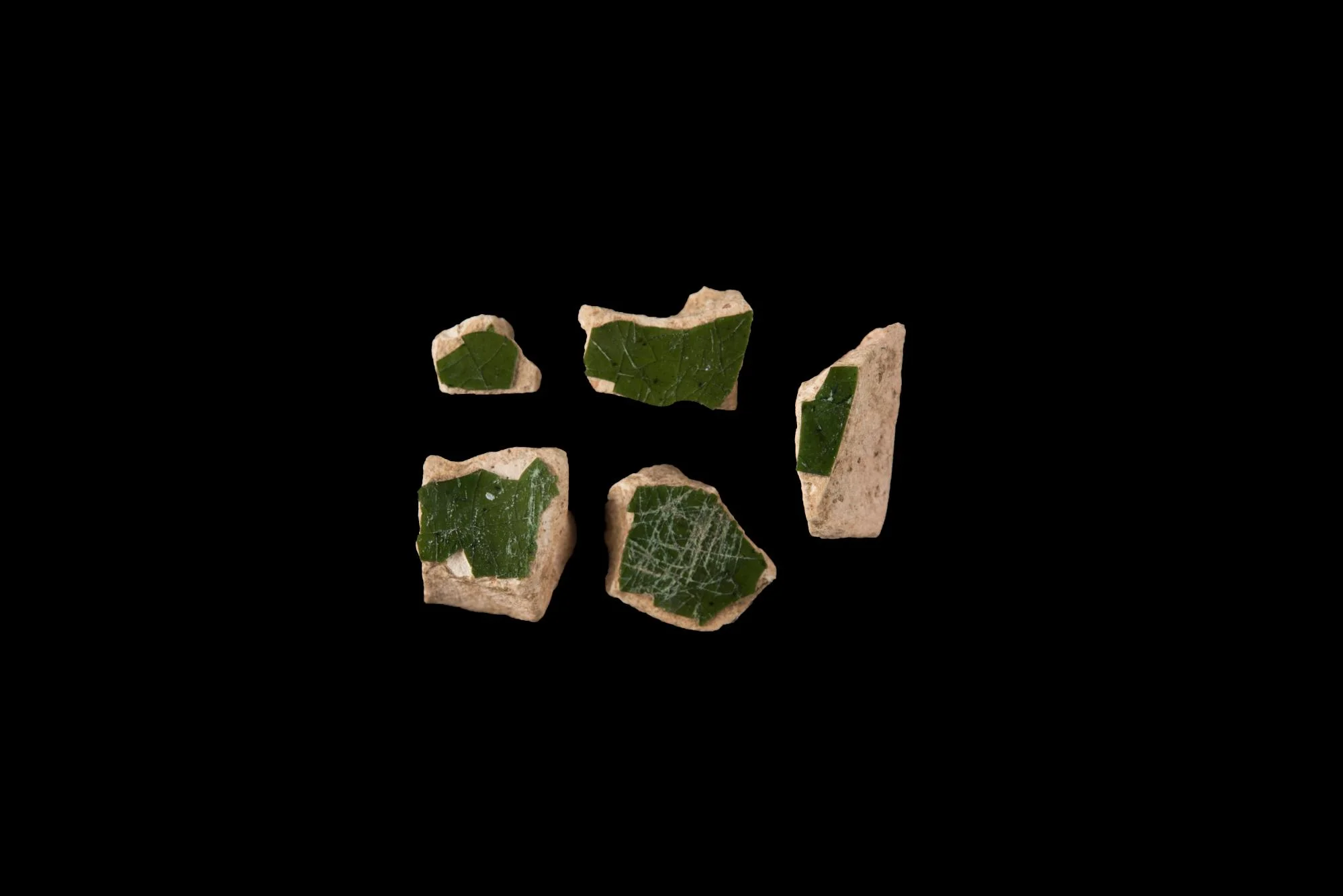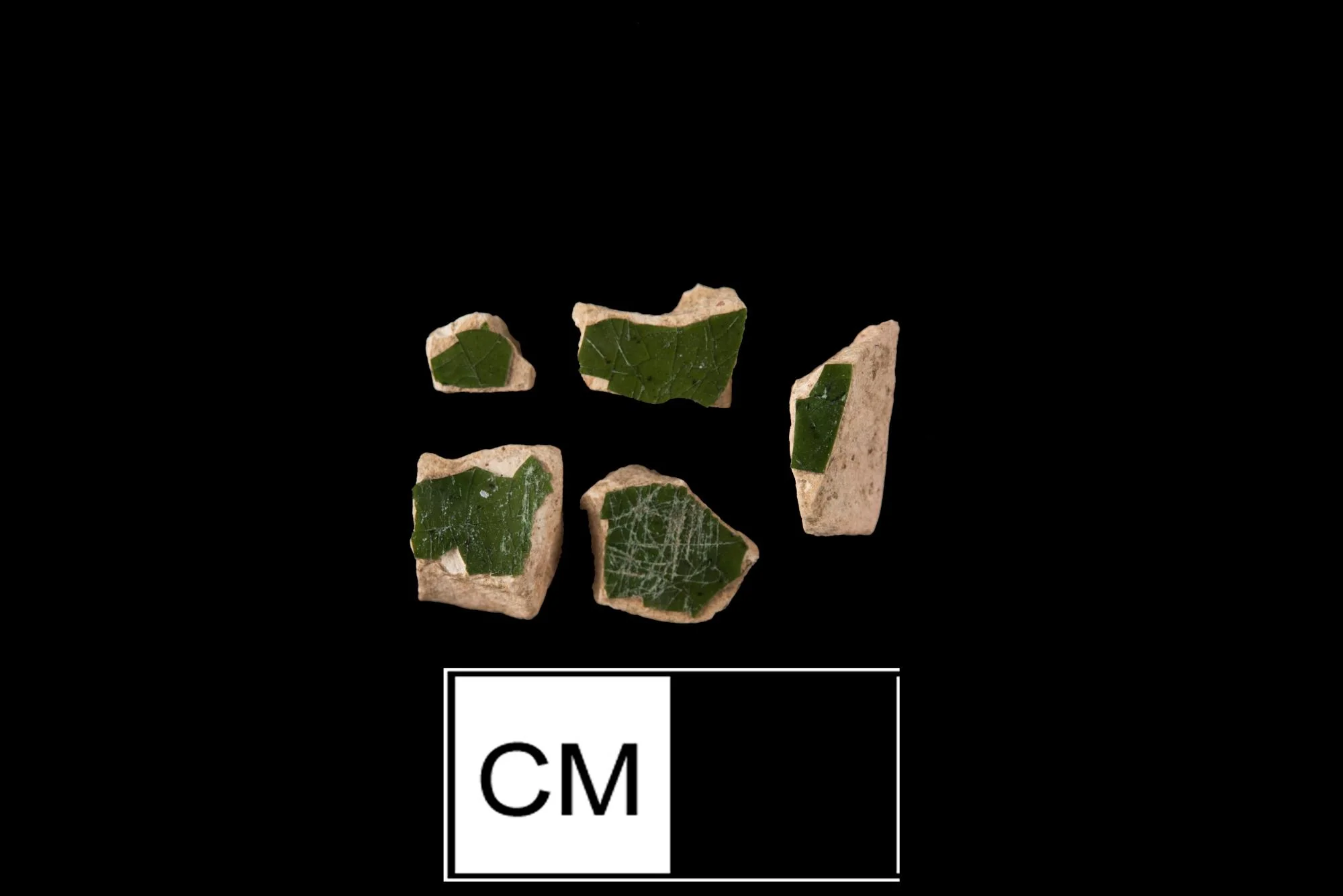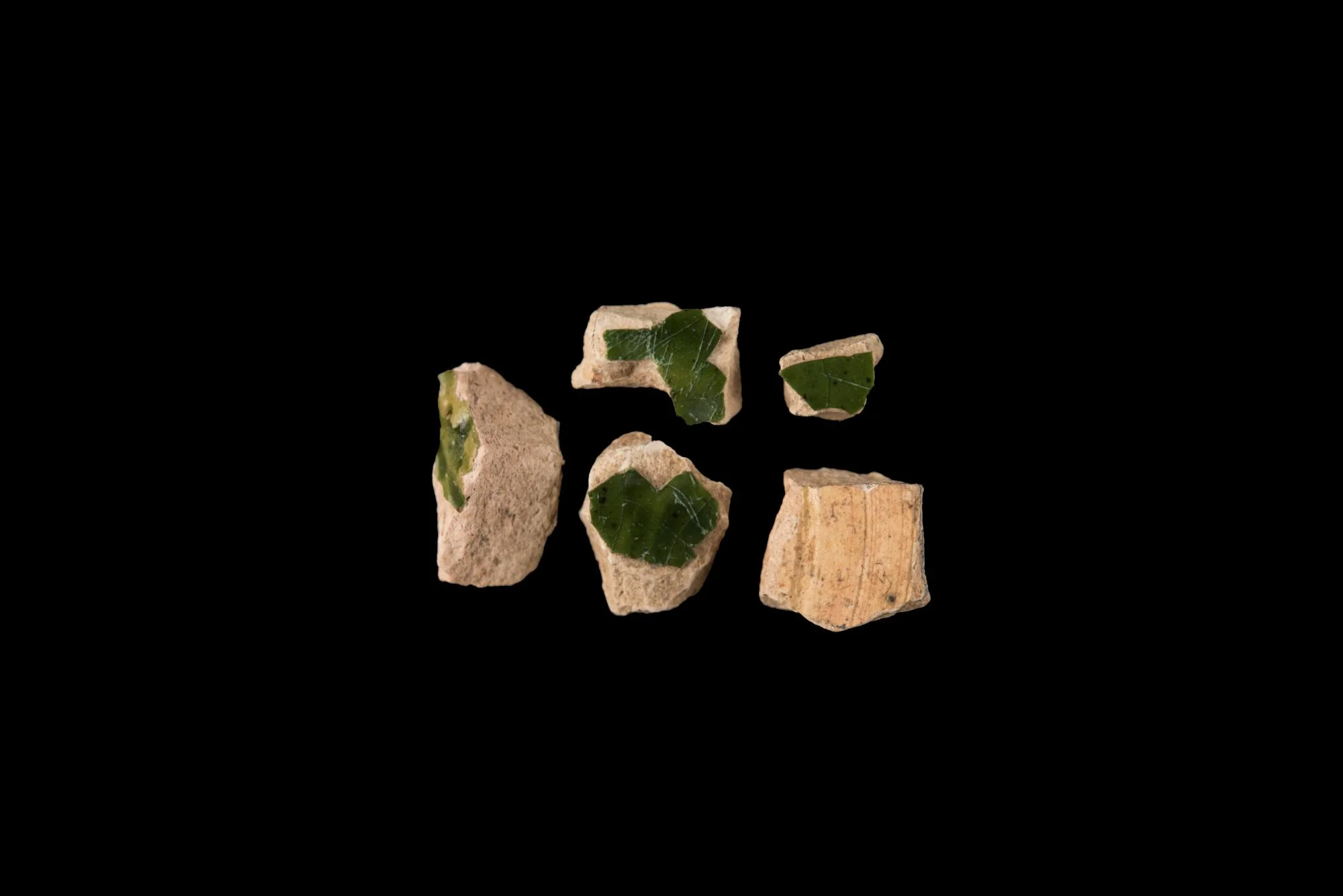Notes
These fragments of thinly potted cream colored ceramic are too small to reliably identify as a particular form. One of the primary ceramics advancements of the mid-eighteenth century was the development of thinly potted cream colored ceramics. In the early 1740s, the same clays used for white salt glazed stonewares, with slightly altered proportions, were found to produce creamy ceramics when they were fired twice. The first firing, at lower temperatures than for stonewares, produced a “biscuit” hard vessel, which was fired a second time after decoration and the application of a liquid lead glaze.
The rich green glazing seen on these fragments suggest this is what archaeologists refer to as Wedgewood Green. In 1759, a partnership between Thomas Whieldon and Josiah Wedgewood resulted in the development of a rich green glaze achieved by adding copper oxide to the ceramic glaze. These green glazed ceramics were produced in both table and tea forms, including two toned variations in the form of vegetables and fruits, into the last quarter of the eighteenth century.
Object Type
Has it Been Conserved?
No
Where Was It Found?
Project Site: House for Families [more details]
Material
Vessel
Manufacturing Technology
Form
Completeness
Decorative Technology
Decorative Patern
Decorative Notes
1 sherd appears to have molded decoration.
Date
1759-1775
Country of Origin
Dimensions
10mm x 0mm x 10mm (W x H x L)
Illustration shows object in comparison to the size of a quarter
Weight
0.1 gram(s)
Object Number
1723155. CW. V.8
DAACS Number
1723155
Project: House for Families
The structure identified as the “House for Families” on the 1787 Vaughan plan likely housed the majority of the enslaved population living at the Mansion House Farm for much of the second half of the eighteenth century. The building was in existence from circa 1760 until it was demolished in late 1792 or early 1793. The archaeological evidence for the structure consisted of a brick-lined storage cellar (44FX762/40-47) measuring roughly six feet by six feet. Historically the cellar served as a handy trash receptacle once it ceased to be used for its original storage function, and through extensive excavation has yielded an extremely rich assemblage of household refuse. The analysis of these remains offers the opportunity to study important aspects of the daily lives of Mount Vernon's enslaved community.
See All Objects From this Dig


 Ceramic
Ceramic Unidentified
Unidentified